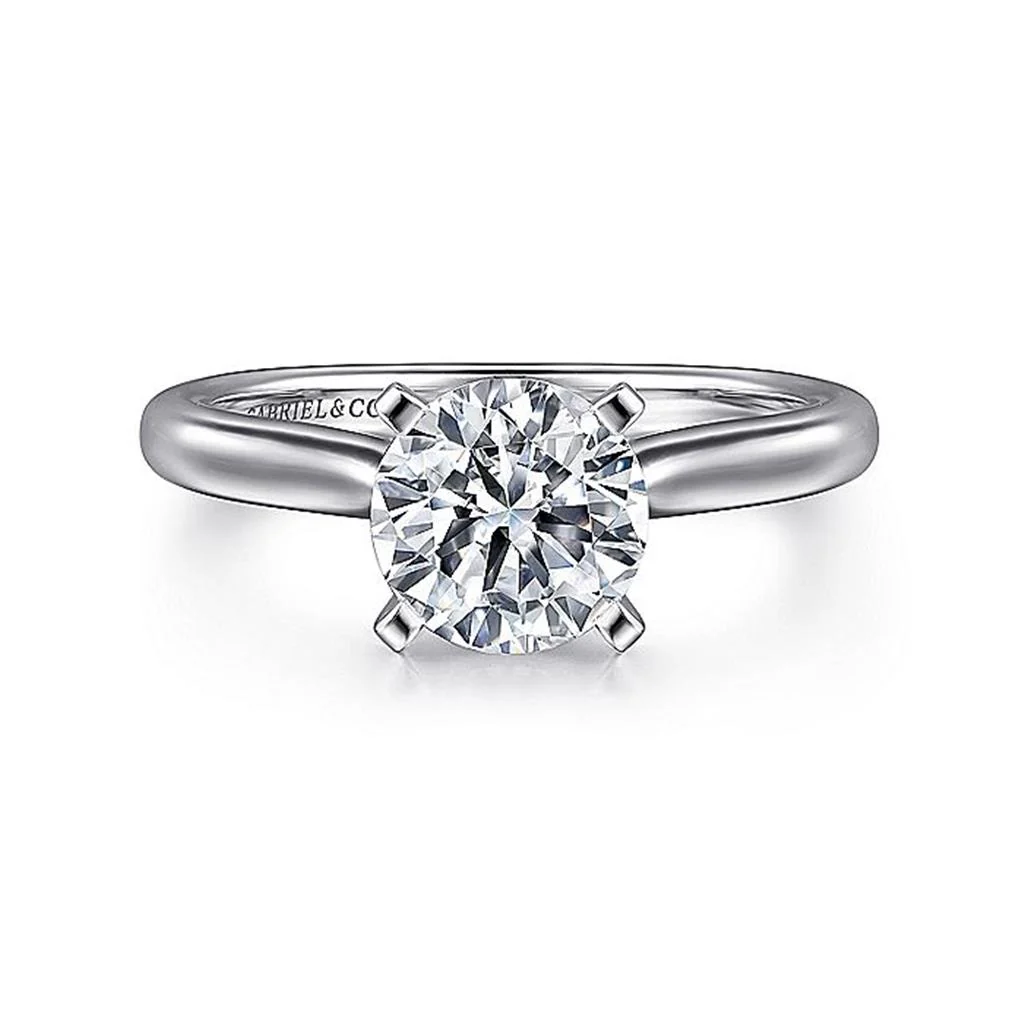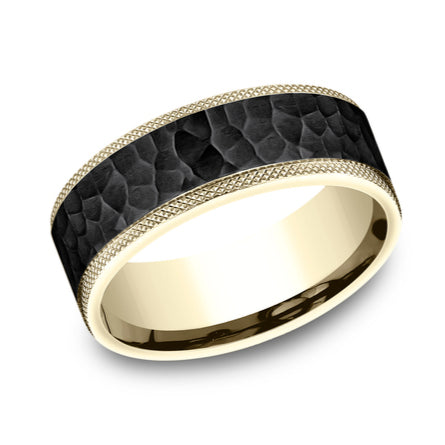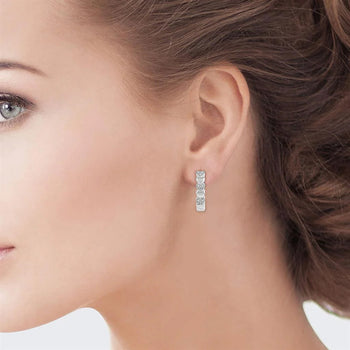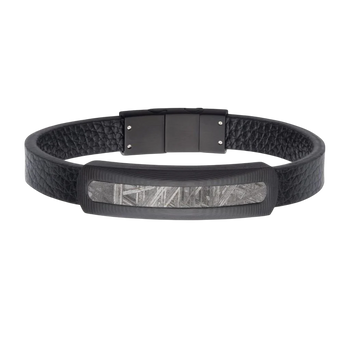
Why Is My White Gold Ring Turning Yellow and How Do I Fix It?
Key Takeaways
- White gold will yellow a bit when its rhodium coating wears off, revealing the natural color of the gold.
- Exposure to detergent, chemicals, and sweat can speed up white gold yellowing.
- The only way to fix a yellowing white gold ring is with rhodium replating — cleaning and polishing won’t change the color.
White gold is an exquisite choice for engagement and wedding rings. However, it can lose its luster over time. So why is my white gold ring turning yellow? This is a frustrating and surprisingly common problem for jewelry owners. Fortunately, there are a few methods to help restore your ring to its normal, beautiful appearance. Keep reading to learn why white gold changes color, how to prevent your ring from yellowing, and how to fix the problem with the help of a white gold ring cleaning service. Let's dive into why your white gold ring is turning yellow and what you can do to restore its showroom shine.
Is It Normal for a White Gold Ring to Discolor?
It’s completely normal for a white gold ring to turn yellow. And good news: It’s not sweat or oxidation that’s doing it.
White gold doesn’t exist in nature — historically, it was created by combining gold with other metals, such as silver, zinc, or nickel, giving it its white appearance. Gold isn’t naturally white, so it’s normal for a white gold ring to discolor.
To achieve that platinum-white look, naturally yellow gold is mixed with another metal like palladium, platinum, nickel, or zinc. This new alloy is less yellow than pure gold, but it can still have a yellowish hue. After the design is complete, the piece is plated with rhodium to achieve a durable luster with a platinum-white look.
White gold will eventually show signs of yellowing, initially on high-wear spots like the bottom and sides of the band. This isn't a chemical process like oxidation; it happens because the rhodium plating wears off.
This process is what makes white gold rings different from yellow gold rings. Over time, the rhodium plating on your ring can start to wear down, revealing the yellowish color of the gold beneath.
What is plating?
Plating is a method of coating metals, usually with other metals. Alloys are blended metals made by melting substances together, mixing them thoroughly, and allowed to cool. Rather than dip a solid-state metal into a molten metal, plating uses electrostatic energy to fuse a thin sheet of one metal to another.
First, the jeweler thoroughly cleans the ring using ultrasonic, steam, electro-cleaning, or a combination of these methods. Then, the piece is polished to improve adherence. Next, the jeweler suspends the ring on a cathode bar. The bar’s negative charge gives the ring a negative charge.
The jeweler lowers the ring into a solution and uses time, temperature, and voltage to attract the rhodium to the ring. Applying a positive electrical charge (voltage) to the solution causes the negatively charged ring to attract the positively charged rhodium. Different metals require different voltages, temperatures, and times to achieve adherence.
What is rhodium?
Rhodium is a member of the platinum family. It’s more scarce than gold and, therefore, more expensive. It’s also harder than gold, allergy-friendly, and very durable. Rhodium is ideal for jewelry plating because it’s hard-wearing and adds a brilliant sheen to the metal below it.
Rhodium plating doesn’t affect the quality and look of diamonds and can even improve them.
Rhodium plating typically lasts 12 to 18 months, depending on the thickness of the plating and the acids in your skin. Have your rings inspected yearly to ensure they don't lose their luster.
How to Fix a White Gold Ring Turning Yellow
Seek the help of a skilled jeweler to fix a yellowing and tarnished white gold ring. Cleaning and polishing alone can restore the shine, but not the color. You'll likely need to have the ring replated to achieve a vibrant white gold tone and remove the yellow hue.
The best way to fix yellowing white gold is by finding a rhodium plating service near you. This is a quick process called electroplating, which allows a jeweler to reapply the rhodium finish to your ring. This doesn’t affect any diamonds or most gemstones on the piece either, meaning it’s safe for all styles of white gold jewelry.
Electroplating also works on other types of jewelry, so if your white gold earrings or other gold jewelry pieces are starting to look yellow, getting in touch with a rhodium plating expert is your best bet to solve the problem. Jeweler’s Touch has an on-site repair studio and expert jewelers and goldsmiths on staff. We offer complete jewelry services in Brea and the surrounding area.
Besides having a jeweler restore your white gold ring’s finish, it’s also worth learning how to maintain white gold jewelry. Here are some tips:
- Avoid putting soap, detergent, or chemicals on your ring
- Try not to fidget with your ring
- Don’t over-polish your ring
- Avoid doing physical labor or sweating while wearing the ring, if possible
Benefits of Booking Professional Jewelry Cleaning and Replating
Professional replating is the only way to reverse a white gold ring turning yellow, fixing its appearance and ensuring it’s clean and stable. Not only will this service have your jewelry looking new again, but you’ll also have peace of mind that any oils, acids, or other compounds have been removed, protecting the gold beneath from tarnish and damage. This is also a great time to have the ring inspected and maintained, ensuring a tight fit of all gemstones, proper sizing, and any other services you may need.
Our Service Area
Jeweler’s Touch is proud to serve the following ZIP codes in beautiful Brea, CA:
- 92821
- 92823
We also offer our services in the following nearby cities:
- Fullerton
- Yorba Linda
- Placentia
- La Habra
- Anaheim Hills
Why Choose Jeweler’s Touch in Brea, CA?
For jewelry services in Southern California, look no further than the experts at Jeweler's Touch. We know how to keep your pieces looking showroom-ready.
Jeweler’s Touch has been proudly serving the Brea area’s jewelry needs since 1992. We’ve developed a reputation for an incredible, curated selection of pieces, exceptional attention to detail when replating and repairing your jewelry, and courteous service as we help you find the perfect additions to your personal style. Whether you’re looking to restore your white gold to its original luster or are looking for something new to make a statement, we’d love the opportunity to be a part of your process.
All our repair and cleaning services include documented details, including a description and a photo of your piece. We insure every piece in our shop, whether we made it or not. We also offer free, no-obligation consultations. Book online today or call us directly to schedule an appointment.
Frequently Asked Questions
How often should I have my white gold replated?
For the best possible look, we suggest having white gold replated about once a year.
Can I fix yellowing white gold at home?
No, you can’t fix yellowing white gold without rhodium replating, as the yellowing is caused by material loss.
What causes the rhodium plating to wear off?
Exposure to sweat, chemicals, detergents, and over-polishing can all cause rhodium plating to wear off.
How long does rhodium plating typically last?
With normal use, rhodium plating generally lasts for 1 to 3 years. If you notice your ring changing color, contact Jewelers Touch to discuss your options.
Will cleaning remove the yellow tint from my ring?
No, cleaning will not remove yellowing from a white gold ring, as the yellow is just the natural color of the gold below.
Should I choose rhodium plating or repolishing?
Rhodium replating is necessary to reverse white gold yellowing. Repolishing is great if you want to restore the sparkle and shine of your piece, but it won’t change the color.








